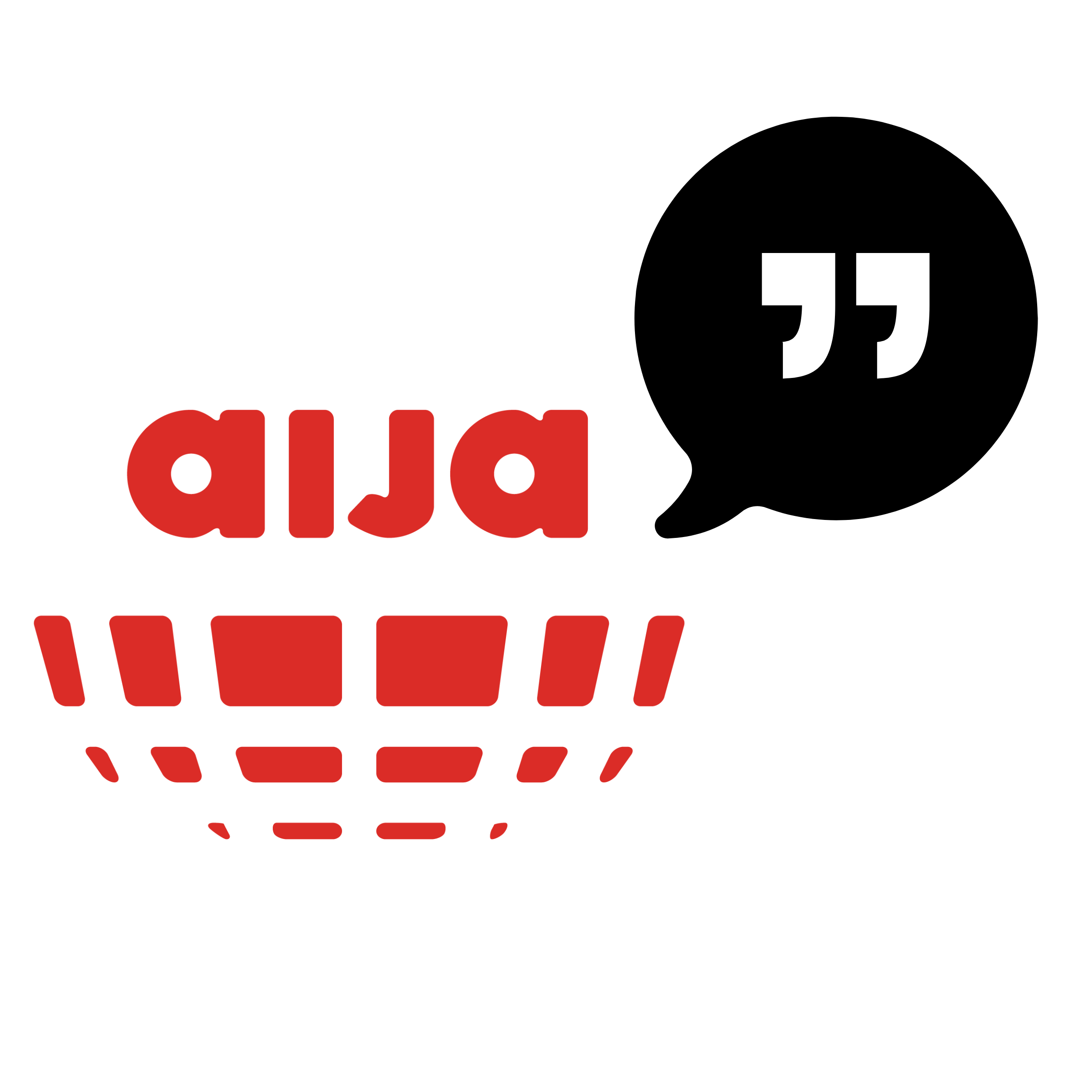Introduction
With a population of over 200 million people, Nigeria represents a significant market for both local and international businesses1. The increasing competition for consumer patronage between businesses offering similar products and services has led to a rise in intellectual property disputes, particularly trademark infringement cases, as these businesses strive to expand their market share. Generally, articulating a trademark infringement claim can be straightforward. However, ascertaining the quantum and determining the method of calculating damages for prevailing plaintiffs can be complex, as illustrated by two recent judgments of the Federal High Court 2(“FHC”).
In Golden Guinea Breweries Plc v. International Breweries Plc & Anor. 3(“Golden Guinea”) and Black Pelican Limited v. Cachez Trading Company Limited & 3 Ors. 4(“Black Pelican”), the plaintiffs sought various remedies (including general damages)for trademark infringement. In both cases, the FHC found 5 that the defendants infringed the plaintiffs’ trademarks. However, the outcomes regarding the award of damages differed – while the FHC awarded general damages (Ten Billion Naira6) in Golden Guinea, without demonstrating the basis for the award, it declined to award damages in Black Pelican on the grounds that the plaintiff had failed to substantiate the claim. The Trade Marks Act 7(“TMA”), Nigeria’s principal trademark legislation, does not deal with this seeming uncertainty. While the TMA broadly recognises the right of a trademark proprietor to recover damages for the infringement of a trademark registered in Nigeria8, it fails to provide guidance on how to assess or determine the quantum of such damages.
Significantly, in Golden Guinea, the FHC went a step further and ordered the defendants to destroy the infringing products and render an account of profits they may have earned from the infringement, raising questions about whether a successful party in a trademark infringement action in Nigeria is entitled to multiple remedies (for example, damages and account of profit) in the same case. Again, the TMA does not explicitly specify other remedies available to a prevailing plaintiff in a trademark infringement action9. However, the decision in Golden Guinea is a good precedent that remedies for trademark infringement are not necessarily limited to damages, although it is necessary to point out at the onset that the propriety of the FHC’s award of damages and account for profit at the same time is questionable.
Awarding remedies such as injunctions, destruction of the infringing goods10, and even account for profits can be justified because these remedies are equitable remedies, and Nigerian courts are empowered to apply equitable principles in resolving cases11. That said, it is crucial for Nigerian courts to exercise caution to prevent the misuse of equitable remedies, particularly when considering the overarching principle of restitution in cases of trademark infringement.
This case note examines the propriety of the FHC’s decisions in Golden Guinea and Black Pelican, emphasising the need for judicial consistency in defining and applying remedies for trademark infringement in Nigeria. Judicial consistency aids clarity and provides intending plaintiffs with a degree of certainty in evaluating potential claims and likely outcomes.
Facts of Golden Guinea and Black Pelican
In Golden Guinea, the plaintiff alleged that the defendant infringed its trademark,EAGLE STOUT, registered with the Nigerian Trademark Registry (“NTMR”) in 1970 in relation to a beer. The plaintiff was out of business for over sixteen years due to a major machine breakdown and industrial fire incident, although it continued to renew the EAGLE STOUT trademark during this period. The defendants contended that they were entitled to use the EAGLE label for their beer products as registered users of the EAGLE label, pursuant to a Brewing and Exploitation Agreement with a third party. Prior to the proceedings at the FHC, the defendants unsuccessfully applied to the NTMR to expunge the plaintiff’s EAGLE STOUT trademark for lack of bona fide use12. The FHC upheld the plaintiff’s trademark registration, reasoning that the plaintiff’s failure to utilise the trademark was excusable due to the industrial fire, and, in any event, the plaintiff’s consistent renewal of the EAGLE STOUT trademark during the period of non-use was sufficient to maintain its validity.
In Black Pelican, the plaintiff claimed trademark infringement stemming from thedefendants’ use of the name “Bagno Design Limited” in connection with bathroom fixtures and related products. The plaintiff argued that this usage infringed its registered trademarks, “IL BAGNO” and “BAGNO TECHNIK”. The defendants countered that “BAGNO” was a generic term for bathrooms and could not be monopolised. The FHC ruled in favour of the plaintiff, finding that the defendants’ use created a likelihood of consumer confusion.
Remedies for trademark infringement in Nigeria – Analysis of Golden Guinea and Black Pelican
The primary purpose of intellectual property rights is to incentivise and reward creativity and innovation. Trademark (and other intellectual property) infringements are recognised as torts13, and where infringement is established, the plaintiff is entitled to adequate compensation and remedies, typically aimed at restoring the plaintiff to the position they would have occupied had the infringement not occurred14. As far as money is concerned, compensation can take the form of damages or account for profit.
The overarching principle for awarding damages in economic torts is to place a plaintiff, as far as possible, in the position they would have been in had the infringement not occurred. Damages are aimed at compensating for losses suffered, restoring the plaintiff to their pre-infringement position, while an account of profits seeks to prevent the infringer from unjustly benefiting from the infringement15.
Damage represents compensation granted to a prevailing plaintiff for loss or injury caused by the defendant’s actions. In the context of trademark infringement, damages can be quantified by calculating the loss of business profits resulting from the diversion of the plaintiff’s customers due to the defendant’s misrepresentation16. In Golden Guinea, the FHC awarded Ten Billion Naira as general damages without justifying the basis for the award. Since the plaintiff was out of business for a considerable period, even though it continued to renew its trademark, it is difficult to justify the court’s decision.
The principles for determining damages in intellectual property (IP) rights infringement claims provide valuable guidance for assessing damages in trademark cases17. For example, if the owner of an infringed IP right is engaged in manufacturing or derives profit from the sale of goods or services covered by the IP right, the loss caused by the infringement is typically the redirection of sales from the proprietor to the infringer. Further, where the proprietor exploits the IP rights through licensing and receives royalties, the damage should reflect the royalty payments that the infringer would have paid had the license been lawfully obtained. However, where the proprietor does not directly exploit the IP right through sales or licensing, the court must assess damages objectively. In this case, the measure of damages is based on what would have been a reasonable royalty, assuming the proprietor and the infringer as a willing licensor and licensee, respectively. Evidence in such scenarios may include royalties paid in analogous cases or other relevant commercial factors that would have influenced negotiations18. It is contended that the FHC erred in Golden Guinea by awarding damages without articulating the basis for its calculation or demonstrating how the plaintiff was entitled to the specific amount awarded. This lack of clarity undermines the credibility of the award and raises questions about its proportionality.
Conversely, in Black Pelican, the court arguably acted appropriately in declining to award damages due to the plaintiff’s failure to substantiate its claim with sufficient evidence. This decision underscores the importance of plaintiffs presenting detailed and credible evidence to justify their entitlement to damages in trademark infringement cases. A more recent decision19 of the FHC illustrates the point that plaintiffs in trademark infringement actions continue to struggle with articulating and proving damages for trademark infringement claims. The judge, evidently frustrated, noted: “the plaintiff has gone out of the realm having quoted some figures it argued and pleaded are the amount he lost but how will the court ascertain the amount without any evidence called to proof (sic) these figures. Undoubtedly, clear standards for evidence and reasoning are essential to ensure fairness and consistency in such awards.
In contrast, an account of profits ensures that an infringer does not unjustly retain profits made dishonestly by knowingly infringing another’s rights20. However, it goes beyond mere forfeiture. As Lord Leggatt articulated in the case of Lifestyle Equities CV & Anr v. Ahmed & Anr.21, an account of profits rewards creativity and innovation and is not intended to “… punish or deter wrongdoing”. Accordingly, the infringer is “treated as if he has conducted the infringing business on behalf of the claimant.22” In Golden Guinea, aside from granting injunctive reliefs and damages, the FHC also ordered the defendants to account for profits, raising concerns about “double dipping”, and more fundamentally, whether account for profits was an appropriate remedy in the first place, in circumstances where the plaintiff was out of business at all times material to the infringement.
Indeed, a trademark proprietor should elect between damages and an account for profit23, as both remedies serve distinct purposes, and the decision to pursue either remedy should be guided by the specific facts of the case and the plaintiff’s objectives. For example, by opting for account of profits, a plaintiff implicitly condones the infringement, making it inconsistent to also claim damages. As Lord Westbury explained in Neilson v. Betts24, “If you take an account of profits, you condone the infringement…so it would be logically inconsistent for the plaintiff to plead for damages once the tort has been condoned”25. Moreover, it is important for Nigerian courts to prevent overlapping claims26, by ensuring that prevailing plaintiffs are not unjustly enriched by recovering twice for the same loss. In Golden Guinea, the FHC, with due deference, overlooked these critical principles, resulting in a miscarriage of justice. The plaintiff was effectively allowed double recovery for the same loss – an outcome inconsistent with established legal principles. This contrasts sharply with the more structured approach in the United Kingdom, which underscores the need for Nigerian judges to exercise caution when granting reliefs in trademark infringement cases. The Golden Guinea case highlights an urgent need for a defined remedial framework to guide decisions on trademark infringement in Nigeria.
Conclusion
Golden Guinea and Black Pelican underscore the need for greater judicial clarity and consistency in addressing trademark infringement remedies. For prospective plaintiffs, understanding the available remedies is crucial to obtaining appropriate relief. In Nigeria, courts may award damages to compensate for losses or order an account of profits to deprive infringers of unjust gains.
However, the absence of detailed guidance in the TMA underscores the importance ofpresenting robust evidence to substantiate a claim. As a result, when seeking damages, plaintiffs should meticulously document their financial losses, including lost profits, diminished goodwill, and expenses incurred for corrective advertising, where applicable. In addition, pursuing an account of profits as an alternative to a claim for damages can ensure that infringers do not unjustly benefit from their unlawful actions.
By adopting a well-prepared and strategic approach, plaintiffs can enhance their prospects of securing effective remedies for trademark infringement, contributing to the protection and enforcement of IP rights in Nigeria.
- International Trade Administration. “Nigeria – Market Overview” Country Commercial Guides, U.S. Department of Commerce, Available at https://www.trade.gov/country-commercial-guides/nigeria-market-overview. [Accessed 2 December 2024]. ↩︎
- A court of first instance with exclusive jurisdiction to deal with trademark infringement claims. Section 251(f) of the 1999 Constitution of the Federal Republic of Nigeria as amended. ↩︎
- FHC/PH/CS/647/2026; judgment delivered on 6 March 2024. ↩︎
- FHC/L/CS/1497/2015; judgment delivered on 16 August 2024. ↩︎
- We are aware that the defendants have appealed the FHC’s decision. ↩︎
- Approximately Seven Million United States Dollars. ↩︎
- Cap 436 Laws of the Federation of Nigeria 1990. ↩︎
- Section 3 of the TMA. ↩︎
- In contrast, in the United Kingdom, section 14 (2) of the Trademarks Act, 1994 (as amended), specifically provides other remedies such as erasing, removal, obliterating or even destruction of the infringing sign. Similarly, in the United States, the Lanham (Trademark) Act of 1946 recognises three broad categories of damages, namely actual damages, disgorgement of profits and attorney’s fees and costs. ↩︎
- This was the case in Golden Guinea and Black Pelican. ↩︎
- Section 32 of the Interpretation Act provides that “Subject to the provisions of this section and except in so far as other provisions is made by any Federal law, the common law of England and doctrines of equity, together with the statutes of general application that were in force in England on the 1st day of January, 1900, shall, in so far as they relate to any matter within the legislative competence of the Federal legislature be in force in Nigeria.” ↩︎
- Although the propriety or otherwise of this approach is outside the scope of this article, it is useful to state for proper context that Section 31 of the TMA provides that a registered trade mark may be taken off the register in respect of any goods for specific grounds, such as lack of bona fide intent to use or continuous non-use for five years, subject to exceptions for special circumstances or prior use by the proprietor. ↩︎
- These are torts whose primary function is to protect the plaintiffs’ economic interests. See Carty, Hazel, ‘Introduction’, An Analysis of the Economic Torts, 2nd Edn. (Oxford, 2010; Online Edn., Oxford Academic, 1 Jan. 2011). Available at https://doi.org/10.1093/acprof:oso/9780199546749.003.0001; [Accessed 2 December 2024]. ↩︎
- See the case of General Tire and Rubber Company v. Firestone Tyre and Rubber Company Limited [1975] 1 WLR 819. ↩︎
- Aldi Stores v. Dunnes Stores [2016] IEHC 256. Although subject to debate, a central theme is an account of profits remedy is the defendant’s egregious conduct in relation to the infringement – GlaxoSmithKline UK Ltd. v. Wyeth Holdings LLC (2017) EWHC 91 (Pat). ↩︎
- McGregor on Damages, 18th Edition (2009), par 40-034. ↩︎
- See for example, Victor George Lilley v. DMG Events Limited [2014] EWHC 610 (IPEC). ↩︎
- This is referred to as the User Principle.[1] In the case of National Guild of Removers and Storers (NGRS) v. Christopher Silveria [2010] EWPCC 15, the court held that, “In many trademark cases the infringer’s use of the infringing mark will lead to sales of the relevant goods which are lost to the claimant. In such a case damages can be calculated by assessing the profit lost as a result of losing those sales. In these cases, however [infringement NGRS marks cases] the claimant’s business does not work in that way and the defendants have not caused that sort of loss to the claimant. The kind of damage suffered by the claimant in these cases in financial terms can be regarded as the loss of the royalty which they should have been paid in return for use of their trademarks by the defendants. This remains so even though the defendants’ use did not result in any lost sales of goods to the claimant.” ↩︎
- Elo Othuke Azaino v. Sterling Bank Plc (FHC/L/CS/332/2022) judgment delivered on December 9, 2024. ↩︎
- Colbeam Palmer Ltd. v. Stock Affiliates Pty Ltd (1968) 12 CLR 25. ↩︎
- Supra. ↩︎
- Hollister Inc. v. Medik Ostomy Supplies Ltd (2012) EWCA Civ 1419. ↩︎
- Lifestyle Equities CV & Anr v. Ahmed and Anr. [2024] UKSC 17. ↩︎
- (1871) LR 5 HL 1. ↩︎
- ‘[A] patentee who elects to take an account of profits stands in the shoes of the infringer and condones his wrong-doing and is entitled only to the profits made by the infringer.’ Saccharin Corpn v. Chemicals and Drugs Co [1900] 2 Ch. 556 at 558. ↩︎
- Watson, Laidlaw & Co Ltd v. Pott, Cassels & Williamson (1914) 31 RPC 104 at 119. ↩︎





